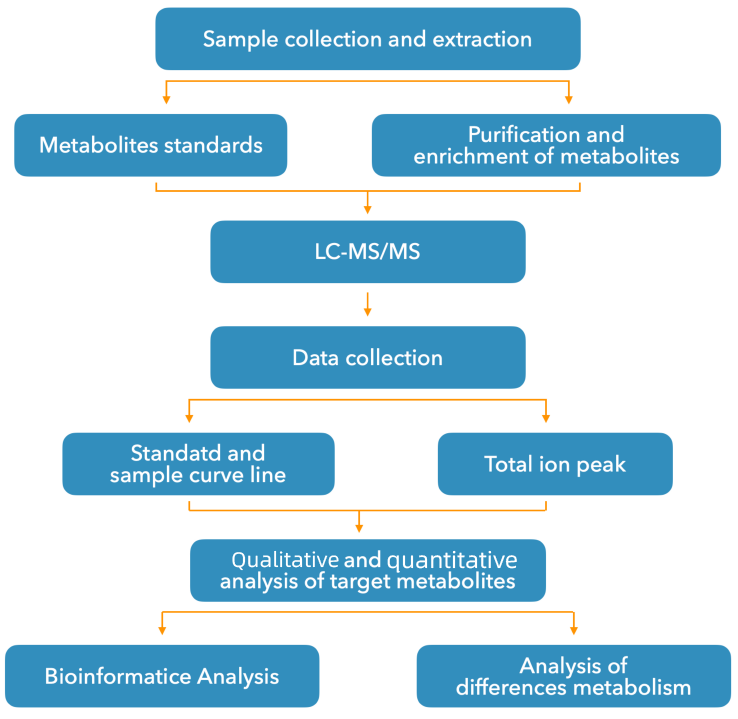Petunidin Analysis Service
- Sample collection and extraction
- Purification and enrichment of target metabolites
- LC-MS/MS analysis
- Qualitive and quantitive analysis of target metabolites
Petunidin is a naturally occurring anthocyanin compound. Its chemical name is 3,3',4',5,7-pentahydroxy-5'-methoxyflavone-3-glucoside, with the molecular formula C₁₆H₁₃O₇⁺. Petunidin is formed by the glycosylation of flavonoid compounds and is commonly found in purple and blue plants such as grapes, blueberries, and red wine. Its molecular structure contains multiple hydroxyl and methoxy groups, which contribute to its potent antioxidant properties. Anthocyanins are plant pigments widely present in various fruits, flowers, and vegetables, providing them with red, purple, and blue hues. Due to its unique chemical structure and significant antioxidant characteristics, petunidin has important applications in the food, cosmetic, and pharmaceutical industries.

Figure 1. The Structure of Petunidin
Services at MtoZ Biolabs
MtoZ Biolabs analyzes petunidin using high-performance liquid chromatography (HPLC) or liquid chromatography-mass spectrometry (LC-MS). These techniques allow for efficient and accurate qualitative and quantitative analysis of petunidin and other anthocyanins.
1. Petunidin Targeted Metabolomics

Figure 2. Targeted Metabolomics Workflow for Petunidin
2. Other Petunidin Metabolites Detectable at MtoZ Biolabs
Applications
1. Antioxidant: Petunidin has antioxidant properties that help neutralize free radicals and reduce oxidative stress on human cells. Studying its effects in the body can reveal potential health benefits such as anti-inflammatory, anti-cancer, and cardiovascular protection.
2. Metabolic Pathway Research: By analyzing the metabolic pathways of petunidin, we can better understand its absorption, distribution, metabolism, and excretion (ADME) characteristics in the human body.
3. Plant Physiology Research: Studying the distribution and function of petunidin in plants helps understand their response mechanisms to environmental stresses such as UV radiation and temperature changes.
4. Natural Medicines: Due to its various biological activities, petunidin is being researched for developing new natural medicines, especially for treating diseases related to oxidative stress, such as cardiovascular diseases, cancer, and neurodegenerative diseases.
Sample Submission Requirements
Tissue ≥ 200 mg per sample
Plasma ≥ 200 μL per sample
Blood ≥ 200 μL per sample
Pharmaceuticals ≥ 0.2 g per sample
We also accept other types of samples. Please contact us to determine the exact sample amount required for testing, and our technical staff will assist you.
To ensure sample accuracy and minimize systematic errors during sampling, it is necessary to select more than three materials under the same conditions for each sample. The same conditions refer to the same time point, essentially the same phenotype, and the same part.
Deliverables
1. Experimental Procedures
2. Relevant Mass Spectrometry Parameters
3. Detailed Information on Petunidin Analysis
4. Mass Spectrometry Images
5. Raw Data
How to order?







